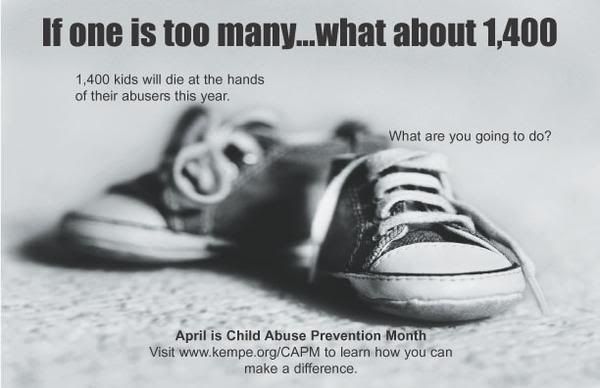Identifying Child Physical Abuse
Identifying Child Physical Abuse
By far, bruises are the most common injuries that children receive from child abuse. So, what are the most common sites that we see child abuse bruises?
• Buttocks, lower back and back of legs – due to spanking.
• Genitals and inner thighs.
• Cheeks – due to slapping.
• Upper lip and frenulum – due to force feeding
• Ear lobes – due to pinching
• Neck –due to choking
• However, abuse injuries can be found anywhere on a child's body.
Obviously, there are also areas that are commonly bruised in children. Protruding body parts are easily bruised and are used to protect the more vulnerable body parts. It is quite common for children to have bruises on their shins, knees, elbows and forehead. However, it is much less common (and deserves further questioning) for a child to have bruises on their buttocks, lower back, thighs, stomach or other soft tissue areas, ears and neck. Bruises in these areas are suggestive of abuse and warrant an inquiry of how the bruise was acquired.
When observing bruises, there are several characteristics that should raise your level of suspicion. These include:
• Clusters or groups of bruises
This indicates several injuries occurred at the same time.
• Bruises of different colors, injuries of different ages
This indicates several injuries occurred over a period of time.
• Over lapping injuries
Injuries on top of other injuries. Sometimes looks very difuse and may hide patterns.
• Pattern injuries
Typically show an outline of the object that caused the injury (belt, cord, shoe, coat hanger, hair brush, spoon, etc).
• Defense wounds
Typically on the back of the arms or hands caused by deflecting blows.
• Linear bruises
Indicative of being struck with a straight object
• Double track marks
Indicative of being hit with a belt (center typically bows out and the edges leave marks).
• Loop type marks
Indicative of belts, straps or extension cords that have been bent in half or of a coat hanger.
• Bruises not common for the child's age or activity level
Look at the child's developmental level (a 1 month old does not roll off of a sofa)


 Phone Numbers To Call For Help
Help That You Need
Phone Numbers:
Helpline for victims and perpetrators of child abuse; information, literature, and referrals
Get Help Now:
Childhelp National Child Abuse Hotline: 1-800-4-A-CHILD
Agencies to call to report suspected child abuse. Organized by state within the U.S.
Child Abuse Reporting Numbers
Helpline and suggestions for coping with a crying baby
Shaken Baby Syndrome or 1-877-6-END-SBS
Helpline for teens who are having problems at home
Youth and Teens or 1-800-RUNAWAY
Phone Numbers To Call For Help
Help That You Need
Phone Numbers:
Helpline for victims and perpetrators of child abuse; information, literature, and referrals
Get Help Now:
Childhelp National Child Abuse Hotline: 1-800-4-A-CHILD
Agencies to call to report suspected child abuse. Organized by state within the U.S.
Child Abuse Reporting Numbers
Helpline and suggestions for coping with a crying baby
Shaken Baby Syndrome or 1-877-6-END-SBS
Helpline for teens who are having problems at home
Youth and Teens or 1-800-RUNAWAY